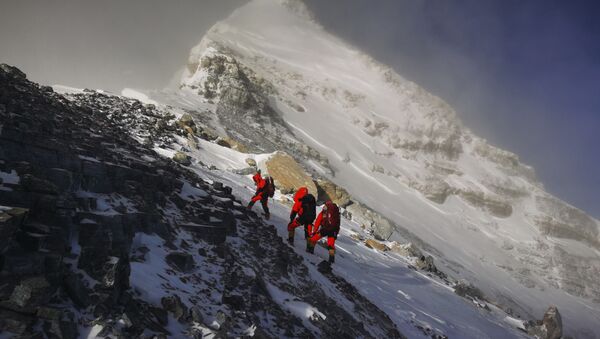The aircraft that completed the mission has returned to Lhasa, the capital of Tibet, according to Chinese state media outlet Xinhua News Agency.
According to OpenEI, airborne gravity gradiometry surveys “provide information regarding the mass distribution of the subsurface through the measurement of gravity vector spatial derivatives.”
China’s mission is expected to “provide data for the region’s geoid surface with centimeter-level accuracy, thus contributing to a more precise measurement of the height of the world’s highest peak,” Xinhua explained.
Currently, the mountain’s elevation is measured at 29,029 feet, according to surveys from the mid-20th century.
Chen Bin, chief of the airborne survey project, revealed Monday that this mission marks the first time China has completed such a survey, Xinhua reported. Airborne remote-sensing measurements will also provide additional information on the surveyed region’s topography. Data for the survey is expected to be completed some time early this month.
Chen also noted that the aircraft used to complete the gravity survey was equipped with world-class tools, some of which were produced in China, Xinhua reported.
Last week, a Chinese survey team of eight members summited Mount Everest to carry out a series or surveys to determine the height of the peak. Since the People’s Republic of China was founded in 1949, six rounds of measurements on the mountain have been conducted by various local and Chinese government-linked organizations.

